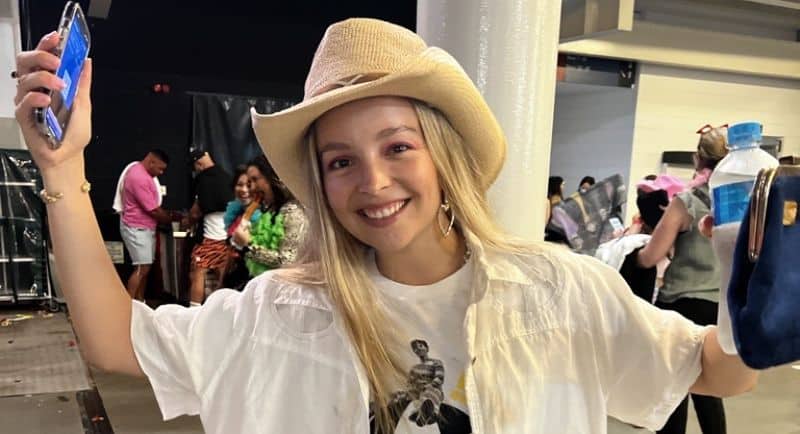‘Obsessed’ is a monthly deep dive into social and cultural trends that can help marketers inform the way they think. Led by Kate O’Loughlin, Initiative strategist and self-confessed obsessive, ‘Obsessed’ will be a magic school bus to expand marketing mindsets and help brands remain relevant amongst an ever-changing cultural landscape.
This month, I’m obsessed with the run club “boom” happening across Australia.
Fitness is forever popular and fills feeds more than most content. However, increasingly, the tone and focus of this content is changing. In recent years, the focus of fitness addicts has been driven by traditionally ‘boutique’ workout classes, with choices like Pilates experiencing 250% growth from 2021 to 2022. This has been driven, in part, by lifestyle and fitness influencers, who promote classes or their own boutique apps such as Tammy Fit, Sweat, or Kic.
The simple, easy to access, and traditionally unglamorous sport of running has never been high on the fitness agenda… until now.
@riley.hemsonIts not that I dont believe you ? Doing it for the girlies ? Realistic running diaries ???♀️♬ original sound – Rileyj
While not an exclusive sport, running has been associated with the physically elite. Nothing about running a 21 kilometre half marathon screams ‘everyday fitness’.
In 2024, this changed, as influencers like Riley Hemson and Madii Bennett began documenting ‘realistic’ run diaries and broke down the misconception that running had to be quick. According to TikTok’s creative centre, #running is now the number two sports hashtag in the county (outperforming #rugbyleague and #pilates).
@madiibennett5 KAAAAA-CHOWWWWW ??♀️⚡️ #realisticrunningdiaries #runtok #beginnerrunner #postpartumrunning #plussizerunner #realisticrunclub #fyp #foryoupage #nikerunclub ♬ original sound – Madii Bennett
Coinciding with the seemingly increased accessibility of running across social media has been the boom of run clubs. In Sydney, the ‘Unofficial Runclub’ has gone from 50 to sometimes 1,000 attendees participating in the group’s early morning run. Bronte’s ‘The 440’ (a 5am Saturday morning run) has got hundreds of weekly attendees as well as spin-off clubs across Australia and the US.
There are clear takeaways here for brands. As marketers, we should all be obsessed with run clubs.
Accessibility is everything
The rising cost of living has put pressure on increasing the accessible options available to Australian consumers. Elite gym classes not only require money to attend, but are also accompanied by pressure to wear specific exercise brands or consume specific supplements.
Running, however, has a ‘get up and go’ mentality, made clear by the presence of varying fitness abilities on TikTok. To replicate this behaviour, brands should look to show varying product use cases now more than ever. By demonstrating multiple audiences using products or services in different ways, brands can increase their image of accessibility.
Connection > transaction
Too often, digital communities can’t permeate into consistent real life collectives. Running subverts this. While the trend of ‘realistic run diaries’ started online, it has been quick to emerge offline in the form of grassroots run clubs. As marketers, too often we forget that our shoppers are people before they are customers. Brands that facilitate connection by promoting and supporting the creation of third spaces will win out.
For example, could an e-commerce brand create physical ‘returns’ spaces to solve customer frustrations? Can online publishers promote IRL ‘article clubs’ for readers to meet and discuss content? The opportunities to bring our audiences together are there, we just need to be brave and take them.
The search for D&Ms
Deep and meaningful conversations (D&Ms) are not new, or exclusive to running. The joke of having D&Ms in a club smoking room still rings true. However, the rise of run clubs proves that deeper relationships are increasingly important to consumers, and brands should take note.
Powerfully true insights have never been more important. Brands that release products with a surface-level understanding of their consumers will risk failure. Now more than ever, it’s critical we hold ourselves to account and ask ‘why?’ when planning new product or campaign launches. Those who fail to do so will quickly be called out.
While we don’t need to purchase a pair of Hoka sneakers or gear up for a 5am run from Bondi to Bronte, marketers and brands alike should be running (ha) to embrace the lessons, and learn from the consumer behaviours, attached to the rise of run clubs.
As we see inflation fall over the coming year, it will be interesting to monitor consumer sentiment through the lens of running, and whether we see an increased push for connection still, or a reversion back to the status quo.
–
See also: Kate O’Loughlin: The Carnival World Cruise: brand titanic… or life raft?
Top image: Kate O’Loughlin
